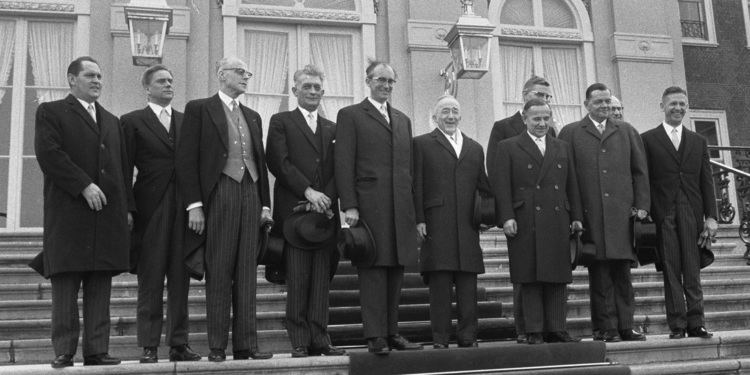No. of ministers 14 | Head of state Queen Juliana | |
 | ||
Date formed 5 April 1967 (1967-04-05) Date dissolved 6 June 1971 (1971-06-06) Deputy head of government Johan WitteveenJoop Bakker | ||
The De Jong cabinet was the executive branch of the Dutch government from 5 April 1967 until 6 June 1971. The cabinet was formed by the political parties Catholic People's Party (KVP), People's Party for Freedom and Democracy (VVD), Anti-Revolutionary Party (ARP) and the Christian Historical Union (CHU) after the Dutch general election of 1967. The cabinet was a majority cabinet in the House of Representatives.
Contents
It was the first Cabinet of the Netherlands after World War II that completed a full term without any internal conflicts. The cabinet was confronted with a demand for democratic reforms in the society and it decided to democratise colleges and universities after the famous maagdenhuisbezetting. Plans were made to modernise politics by establishing an electoral system with districts or a chosen prime minister, but these plans were not implemented. Meanwhile, a pay pause due to the decision of employers and employees to raise wages was partly revoked after anti-government demonstrations and strikes. The minister of economic affairs, De Block, resigned, officially as a protest against the wage rise in the metal industry, but another reason was his slow reaction to the inflation and rising prices after the introduction of Value added tax. More unrest took shape in demonstrations against the war in Vietnam. Internationally, relations with Indonesia improved, resulting in a visit by president Suharto, which was, however, overshadowed by the occupation of the Indonesian embassy by Moluccans. The Soviet Union invasion in Czechoslovakia was seen as a reason to increase the defence budget.
